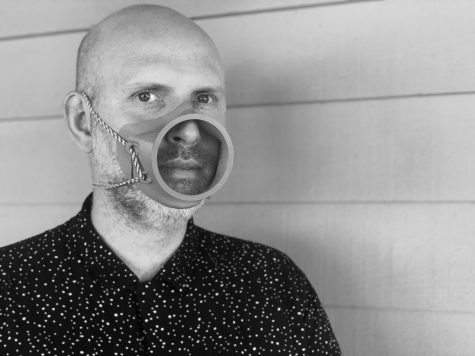Accessible Mask Project to develop inclusive face masks for deaf community
June 4, 2020

As a deaf person, Justin LeBlanc is hesitant to go out in public during the pandemic because of difficultly in communicating with others while wearing a face mask.
The last time he went to the grocery store, LeBlanc, an associate professor in the Fashion Studies Department, said someone appeared as though they were shouting at him for being in the self-checkout lane although there was no indication he should not be there. But because he could not read their lips and they could not sign, he did not understand why he was being yelled at.
While people are adapting to wearing face masks, LeBlanc said those who are deaf and use American Sign Language will not be able to until there is a solution to the communication barrier.
ASL is dependent on facial expressions to identify information and emotion, he said. LeBlanc said he normally relies on lipreading, but now he can only interpret something by looking at eyebrows, which do not convey enough information when one is wearing a mask.
“Having signals from the face, body language [and] lipreading is important,” LeBlanc said. “Using something as simple as a mask [can] eliminate all that opportunity to be able to communicate.”
LeBlanc had a growing concern for the upcoming semester and how he would communicate with his students, who wear face masks, which will likely be required for everyone on campus.
But through a summer workshop class, LeBlanc and Peter Cook, associate professor in the American Sign Language Department, will collaborate to create a mask which will make communicating more accessible for the deaf community.
The course, “Workshop in Fashion Studies: The Accessible Mask Project,” is a hybrid course, combining remote and in-person instruction. A collaboration between the ASL and Fashion Studies departments, the course will direct students in developing a prototype of a transparent face mask in five weeks, from July 20 to August 22.
The course will be online for the first three weeks and the last two weeks in-person.
Cook and LeBlanc will go over the history of deaf culture and medical face masks through Zoom and once they meet in-person, groups of students will create a tangible product prototype.
“My role in this workshop is to provide cultural and linguistic information from deaf perspectives,” Cook said. “There will be background assignments related to [the] deaf community and language that will serve as resources for design process and development.”
Colbey Reid, chair of the Fashion Studies Department, said the department reached out to students studying sculpting and those who were involved in the #ColumbiaMakesMasks project to join the workshop.
Reid said students who would like to participate in the class will have a little over $12,000 in funding available to them.
Reid said she is able to use leftover funds from the last academic year toward students’ needs for participating in the class, including assistance with living arrangements and travel for those out-of-state.
Similar to clients in the fashion industry, LeBlanc said students and professors from the ASL Department are also clientele because they are the ones who will be wearing the masks.
Each group will create a different prototype addressing issues such as clear mask materials getting fogged up and elastic bands, which are difficult for those with hearing aids and cochlear implants to wear.
Allowing students to create and encourage the use of clear masks “will help the deaf stakeholders within the Columbia community as well as the deaf communities around Chicago [have] greater transparency in communication,” Cook said.
He said the class will increase accessibility and inclusivity and will empower deaf and ASL students and staff, because although clear masks are available online, LeBlanc said they are disposable and reserved for hospitals and big business corporations.
At the end of the course, students will have the opportunity to show off their work and receive feedback from a panel of community members.
“When the students come back, we’ll have some kind of prototype … so we can use can regain some of the accessibility back,” LeBlanc said.
Updated Wednesday, June 17 at 9:00 a.m.







